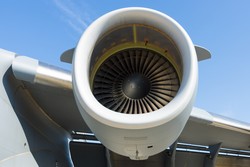Accurate condition monitoring for aero engines
The efficiency of gas turbine engines increases with increasing gas temperature, allowing for a significant reduction in fuel consumption and carbon dioxide emissions. To achieve this reduction, the engine parts are protected by thermal barrier coatings (TBCs). These ceramic materials are able to withstand high temperatures and minimise the thermal input to the substrate. The EU-funded project STARGATE (Sensors towards advanced monitoring and control of gas turbine engines) was launched to develop the technology needed to measure the critical parameters of thermal insulation layers up to temperatures of 1 600 oC. During the project's three-year lifetime, researchers succeeded in surpassing the limitations of existing sensors. Among the sensors developed is an infrared radiation thermometer. Unlike short-wavelength infrared-range thermometers currently used, the new instrument is particularly suitable for non-contact temperature measurements of the surfaces of TBCs. Ceramics are semi-transparent in the short infrared region of the electromagnetic spectra, but not in the long infrared range. In addition, STARGATE partners designed and validated a high-temperature pyrometer able to measure thermophysical properties of TBCs. Specifically, the thermal conductivity of the coating and the degree of emission of its surface can be measured in situ during gas turbine operation. Importantly, meaningful values would be obtained for use in optimising turbine operation. STARGATE technology is expected to contribute to improving the next generation of green and efficient aero engines. To date, gas turbines are operated within safety margins safeguarding parts from mechanical failure because of the uncertainty in key parameter measurements. However, with the new sensing technology, it will be possible to operate these close to the maximum operating ceiling.
Keywords
Condition monitoring, aero engines, sensors, temperature measurements, STARGATE







